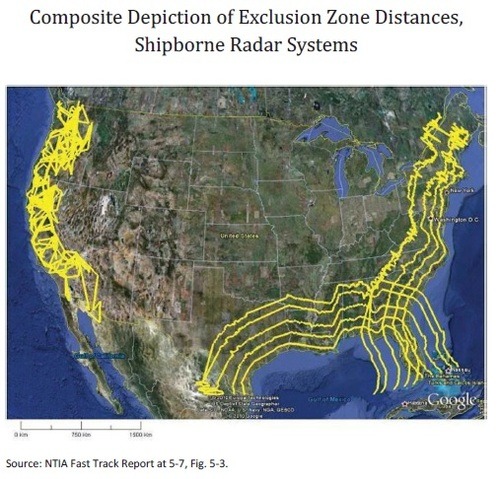
The demand for wireless broadband is outpacing the government’s ability to reallocate or repurpose spectrum for private sector use. This has led to a “spectrum crunch,” and policymakers are starting to take notice. FCC Chairman Tom Wheeler requested public feedback on 2012 plans to address this scarcity by allowing wireless carriers to operate a Citizens Broadband Radio Service (CBRS) in the 3.5 GHz band alongside the federal incumbents. Since the band is currently used by federal agencies for radar and other government functions, the prospect of sharing it with the private sector poses critical concerns for investors.
The government would maintain large “exclusion zones” (see map above) where private users would be prohibited from using the band, lest they interfere with government activities and pose a threat to national security. And the prospect of only short-term licenses for wireless carriers to use the spectrum creates uncertainty, which may discourage investment. TF’s Tom Struble discussed these concerns in Comm Daily:
Tom Struble, legal fellow at TechFreedom, who worked on the issue as a Wireless Bureau staffer, said many questions remain about the CBRS proposal. The large size of exclusion zones “would be a huge problem for carriers,” which would “severely limit” the potential deployment of small cells and the buildout of heterogeneous networks (HetNets) providers need to increase the carrying capacity of their networks, Struble said. Proposed license terms are only one year, though they can be extended, versus 10 years for more typical licenses, he noted. “Carriers are worried that they may invest a lot of money building out a small cell network only to lose their licenses in a few years and have to eat all of their investment costs,” Struble said. “Essentially, they want more long-term certainty before they’re willing to invest millions/billions in building out their HetNets.”
